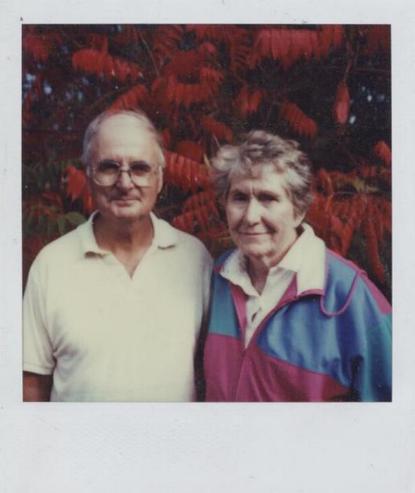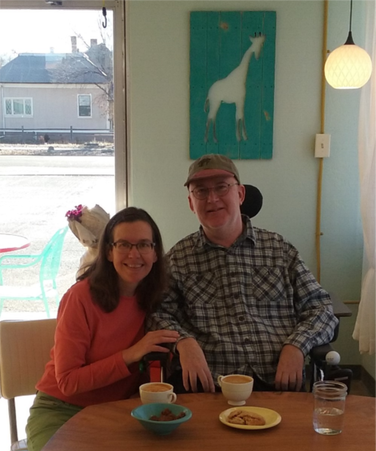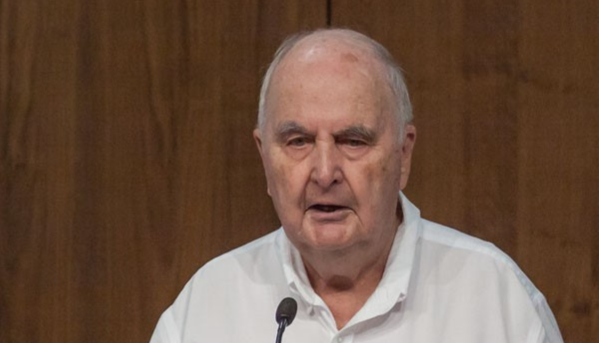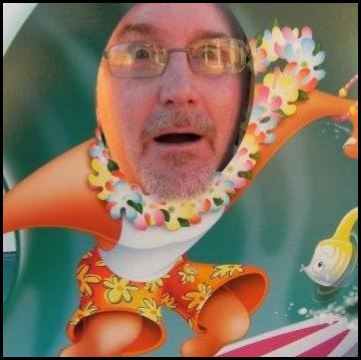|
We will be hosting the Faces and Voices Exhibit at the beginning of March. If you are able to help with take down of this on Wednesday March 14, please contact Robert McDonald at [email protected].
More about the exhibit: Faces and Voices is a multimedia exhibit designed to educate the public and create empathy for the life experience of the homeless. While we can go online to see the data on homelessness and poverty in America, rarely do we choose to speak to a homeless man, woman or youth to get to know them; instead, we may make up a story in our own minds as we drive by or cross the street to avoid contact. How then can we understand that a homeless person is a sister or brother, mother or father, a human being like anyone else deserving of human dignity and respect? The exhibit includes veterans, men, women, families and youth telling their own stories in their own words. Through photographs, audio interviews, written transcripts and some life size pieces, the stories of our homeless neighbors come to life. The exhibit is tailored to each location… at some sites we have mounted photos on the wall while at others we mount the photos with headphones and MP3 players on cots with accompanying camp stools and other items that give a personal feel to the overall experience. The exhibit will be at UUCGV February 28 through March 14. Please invite friends to come view this eye-opening exhibit.  This is a monthly column helping us to get to know our friends and members in a deeper way. We thank Monte High for taking the time to do these in-depth interviews for our newsletter. Phil Ellsworth was born in Mishawaka, Indiana. Mishawaka adjoins South Bend, and straddles the southwestern Michigan border. The area hosts hundreds of lakes. “If there is a heaven, it’ll have lakes”. For summer vacation the family would pick a lake and put up a tent – where the family would live for the summer. Dad worked for the Studebaker Corporation; he would leave for work in the morning and join them again in the evening. They chose the banks of beautiful, clear-water lakes to stake down their flapping summer home. Phil and his younger sister Nancy were free to roam. They had a rowboat and long cane fishing poles. Days swimming through a world of water. They befriended kids from nearby farms. Phil and his dog Wiggs had many adventures. Phil also treasured the family road trips to the Upper Peninsula for scenic and wildlife viewing – hoping to spot a deer. Now the deer come to his backyard. During his senior year of high school, at the age of 17, Phil joined an Army reserve program for graduating boys. It was an officer training program designed mainly for engineers. He was at the University of Kentucky for a year when the Army discontinued the program and placed them all on active duty, as infantrymen. Phil went to Fort Benning, Georgia, for basic training, and then on to Fort Bragg, Kentucky where he joined the 100th Division. They landed in Marseilles, France, in October 1944. The Army shaped Phil’s entire life. He would carry the experience of war with him always. The following quotes and poems are from Phil’s book “Memories of War”: “November 9, 1944, my 19th birthday. We stand in the woods in the Vosges Mountains in Lorraine and sing several hymns before going into combat, among them “I Would Be True” and “I Need Thee Every Hour”. Before we can disperse, shells began exploding in the trees above us. Johnny Chillemi is our first fatality. After dark I am sent to the company command post on some errand. I poke a twig in my eye and make my way almost blindly.” “Christmas Eve, 1944. The open, rolling hills near Rimling, France are covered with snow. Burley and I huddle in a hole. A flare brings momentary daylight and then it’s night again. In the distance – but too close – the sound of German tanks on the move.” “It is mid-January, 1945. Robert Burlison (Burley) dies of wounds received when the company is overrun.” Robert Burlison American Cemetery, Epinal, France If he knew fear, I did not see. He was a brother’s arm to me, And when he fell, fell part of me. Epinal It seems unfair, considering all, That I am here in this place now With ninety summers on my brow And you are there in Epinal Among our comrades sleeping there, That I can hear the robins sing And see the almond tree in spring And you are there. It isn’t fair. Flowers, if you grow in Epinal, Grow near where Robert lies. I will dream that he has eyes And sees some fairness after all. The Meeting Once, in a contested place, I met a soldier face to face. We stopped and turned and walked away, Both to live another day. I often wonder who he was And where he is and whom he loves, And if he ever sees, like me, A soldier in his memory, Or if before the end he fell, Leaving only me to tell Of our meeting, face to face, Once, in a contested place. Talking to a high school class about the war When I talk to them about the war I tell them of the ones we left behind To be gold stars in grieving windowpanes, How if you live they’re what you think about And glory isn’t even in your mind. And what of those caught in your rifle sight? Those, too, you think about, for they as you Trudged in the mud, lay fearful in the night And dreamed of home. Those, too, you think about, ... Those, too... I tell them that; I know it to be true. “There are three to whom I know I owed my life during the war. Two were German, one of them an officer that must have said, “Hold your fire”.” “How improbable, to have survived and to be here in this place. It is as if I have lived two totally different lives. I wonder how many veterans feel the same.” On Phil’s first day home from the war, his dad took him to the local pub to get a drink – but they wouldn’t serve him because he was too young. Phil took advantage of the G.I. bill to get a geological engineering degree from Michigan Technological University. His first job out of school was for an iron mining company. He was lucky to be in the first group to ride the cage down a new 2000 ft. deep underground shaft – lucky that an old Welsh miner stopped Phil from leaning against the back of the cage when he didn’t realize there was no back to lean against. What he thought was the back was the rock wall going by too fast to be seen. In 1952 Phil was hired by the Atomic Energy Commission. He loaded up his 1935 Plymouth and headed West – to Grand Junction, Colorado. The AEC office was located along the Colorado River, a short distance southwest of the Fifth Street bridge. Grand Junction was home-base, but Phil and a college friend were stationed in the Lukachukai Mountains near Shiprock, New Mexico. They were searching for uranium. Every other weekend Riggs Aviation would fly them back to Grand Junction in a Beechcraft Bonanza airplane. Phil remembers the Hotel D and the Carousel Bar downtown. And a blind date romance that was cut short after two dates because of circumstances beyond his control. Margaret lived upstate in Craig, but was working on a nursing degree through St. Joe’s hospital in Denver. She happened to be in Grand Junction completing a training course for nurses who expected to work in rural hospitals. Phil was transferred to Grants, New Mexico; and Margaret disappeared from the face of the earth. After five months in Grants, Phil took a job with the Kerr-McGee Corporation, doing uranium exploration. His group was headquartered in Grand Junction. Phil started working on a project in the Powder River Basin in Wyoming. Every couple of weeks he would drive back to Grand Junction for a few days and then head back to Wyoming. One spring day he stopped for gas in Craig, when out of the blue he heard someone calling his name. It was Margaret! She was running an errand for her mother after finishing her shift at the hospital. She happened to look across the street and see a black 1948 Studebaker Commander convertible with red leather upholstery parked at the gas station, and knew she had been in that car. It took the time for her to cross the street for her to remember his name. Sure enough, there was Phil standing beside his car. Phil would revisit Craig every two weeks until they were married that September. Phil’s career took off and the family grew, by two girls and a boy. Phil and family had several stops across the West, Midwest, and Australia. Yes, Australia, where the entire family spent a year in Canberra, while Phil traversed the continent. The children enrolled in school and for a brief time became a part of the community, exotic birds and all. They all thoroughly enjoyed it, and they might have stayed longer but Margaret and Phil were worried that one of the girls would fall in love and get married – and forever be halfway across the world in Australia. Phil’s jobs sent him flying into some of the most remote and beautiful places in the world – all around North and South America, Greenland, Niger, Algeria, Fiji, Tahiti, New Zealand and Australia... including an unexpected stop in the remote jungle of Venezuela. On a flight from Caracas to the southeastern corner of the country Phil, his partner and the pilot found themselves over a complete cloud cover. After some time they realized from the sun position that they couldn’t be going in the planned direction, and were headed toward the Brazilian rain forest with a dysfunctional navigation system. As they became more and more nervous, the clouds inexplicably parted, and below them was a short grass landing field in the middle of the jungle. When the plane landed they were greeted by people who were mostly naked. Fortunately there was an English-speaking doctor in the village who could point them toward civilization. Phil is grateful for the adventures, the awesome natural beauty and the different cultures that he experienced; yet, what most motivated him in his work was the search for “Hidden Likenesses”. He was hooked by the feeling of the-moment-of-discovery, the feeling of seeing something for the first time that no one has seen before – in that moment your heart skips a beat. This search took place mostly at a desk, with geological information and maps. You take something you understand, and consider if it can somehow fit with something you don’t understand. There is a geological likeness between mineral deposits that tells you why they ended up where they are – “Hidden Likenesses” – if you can find it. Yet, in the moment of discovery it is as if “it” finds you, a gift from out of the blue. When Phil retired it was a natural transition, from searching for hidden likenesses that reveal minerals, to listening to the Muse that reveals a melody of word. Phil now spends most of his time writing – or listening, awaiting the moment of inspiration that appears out of nowhere, begging to be penned. Though the war is a shadow forever at Phil’s side, his life is defined by love. He was fortunate to find Margaret and the love that brought him a cherished family; and later in life to find another big, astonishing love, with Verity. Phil was fortunate to have loved two wonderful women. Sometimes at night he’ll look up at the stars and imagine that it’s Margaret and Verity looking at him. “Cedaredge is a good town to be old in”. Mornings you’re likely to find Phil at Stacy’s Main St. Gallery, drinking coffee and chatting with friends. His daughter Carolyn lives two blocks away and is a great help in his old age. (His daughter Ruth and son Philip live in Austin, Texas.) Friday afternoons you’ll find him at the nursing home playing his harmonica for the residents. Phil’s harmonica has provided him with some good company over the years. He spends a lot of time listening to music: music soothes him. Phil enjoys the monthly UU meetings of the Black Canyon of the Gunnison discussion group. And thanks to David and Kim Stueck, Phil is able to attend many Sunday services at the UUCGV. Most of you will have heard him speak, and were certainly touched by his adroit and heartfelt sermons (he calls them talks). You’ve heard his beautiful poetry. Phil has been a Unitarian since 1960 when he and Margaret joined the UU Fellowship in Golden, Colorado. My life flows on... in endless song...  This is a monthly column helping us to get to know our friends and members in a deeper way. We thank Monte High for taking the time to do these in-depth interviews for our newsletter. It is the Christmas break of his senior year of high school. He is 18 years old. He is on his way to pick up his buddy and it’s early enough that there are only a few tire tracks through the 6 inches of fresh snow. The storm blew off in the early morning and it is frigid cold, the snow squeaking under the tires as he drives. Despite the cold and the early hour he is in a particularly good mood, excited for the prospects of the morning. You see, there aren’t many things he’d rather be doing – he’s off on a hunting adventure. He pulls over and his friend opens the back door to place his gun in the backseat before getting into the front seat. His friend shoots a 12-gauge because he likes the extra power and the slightly bigger shot pattern, but the boy prefers his 20-gauge semi-automatic shotgun because it’s lighter and easier to handle. He likes the way the 20-gauge feels in his hands as he’s able to balance, swing and shoot with ease. He is a very good shot. He’s been hunting with a shotgun since he was 12 years old. It’s a short drive as Totten Lake is only a few miles out of Cortez, out amongst the sagebrush and pinion of the foothills. He parks above the lake facing toward their destination. They can see the lake in front of them but not the cove on the far side where they’re headed. Before them is a steep embankment down to the lake and then a small ridge. On the other side is the cove where they hope the ducks will be huddled down in the cold, about a mile and a half away. The boys grab their guns and work their way slowly down the steep hillside, weaving through the pinion trees. At the bottom they walk the shoreline up to the inlet and up a ways further to where the creek narrows and they can find a place to cross. Then they’re off, trudging through the snow-covered sagebrush and jackrabbit trails, and then climbing the ridge and finally peeking over to the back cove of Totten Lake. The back cove is completely frozen over but the middle of the lake is still open water. And the ducks are right where they thought they’d be, huddled on the bank at the edge of the lake. And there are a lot of them, hundreds, at least three flocks, judging by the different sized dots that they see in the distance. Holy Cow! Big, big eyes on the boys. It’s hard to contain their excitement. Everything is in their favor. A breeze is blowing in their face, the snow will further muffle the sound and the ducks won’t want to fly into the cold. Okay, here’s the plan. We’ll walk around and down the ridge away from the lake and then circle back, and the last 200 yards or so we’ll scramble up in an army crawl on our knees and elbows. The brush and willows along the lake provide enough cover even in winter to hide our approach. We should be able to get within 25 yards. Side-by-side lying in the snow with their heads down the boys remove the gloves from their right hand and then rise in unison, flicking off the safety as they bring up their guns ready to fire. Ducks fill the horizon. A flurry of wings – ducks, and more ducks – nothing but ducks. Aim and fire, aim and fire, aim and fire. Three shots each. Ten ducks down. Jubilation! But there is a dilemma. One of the ducks must’ve been a headshot because it managed to fly about 100 yards out onto the lake before it died, and fell, onto the ice. The boy knows that it’s a silly risk, that the ice is thin. Yet, he cannot bear the thought of leaving the duck to go to waste. So treading carefully, he begins to walk up the cove of ice, the ice getting thinner the closer he gets to the open water on the main body of the lake. He’s about 10 feet away from the duck when the ice begins to crack from his feet extending outward. He watches in shock as the cracks extend outward in all directions to about 10 feet until he plunges through the ice into the frigid water. Fortunately the water only comes up to his shoulders. He tries to reach up and pull himself up onto the ice, but the ice is too thin and it breaks with each attempt. And the bank is so far away it may as well be on the other side of the world. The boy knows about hypothermia. He knows that he doesn’t have much time before his limbs will go numb and he will be unable to move. Adrenaline flows through him and with a wild urgency he jumps up and cracks his shins against the ice. Again and again he jumps to crack his shins against the ice, breaking a trail through the ice until he is far enough into the shallower water that he can roll over onto the ice – and run. He runs to his buddy and tells him to grab the guns and the ducks and follow and he keeps running up and over the ridge and through the sagebrush and leaping over the inlet and scrambling up the steep hillside to the car and he starts the car and he strips down to pants and T-shirt and socks and he cranks the heater and he races the car around and around the parking lot to warm the engine faster until his buddy arrives – and he’s alive! He is overcome with an immense sense of relief. He is alive but he is blue coming through the front door and his mother is alarmed and urging a hot bath, and the bath stings – O the pins and needles his body is on fire – and as the numbness leaves his gouged and bloody shins the pain sears and sizzles in his brain. The bruises will eventually surface – the full-length of his shins a black and blue that will fade after a few weeks to yellow-green. The scabs will sting until they become a maddening itch. The scars on his shins will slowly fade away in about 25 years. This is one of my favorite stories. After telling it numerous times over the years it became a humorous tale of a fool and hero who compromised and saved his own life. Putting it down on paper and paying attention to detail placed me into the heart of the memory, into the moment. I had forgotten how traumatic this experience truly was. It also brought back my state of mind during this period of my life. I was at that stage when you’re expected to choose what it is you want to do for the rest of your life. I did not know, and the pressure of this seemed overwhelming. And first love had recently come and gone like a big bang implosion that rocked me to my very core. It’s so easy for a man (boy) to tuck his heart away because the pain is too much to contain. My name is Roy Lamont High, though I’ve mostly been called Monte since I was a baby. I was born on August 2, 1963. I was born in Cambridge, Nebraska, because Indianola didn’t have a hospital. Mom and Dad were married four years earlier – Mom was 16, Dad 21. Mom finished her final year of high school after they were married. 2 ½ years after I was born my brother Kyle followed. (14 years after that my brother Anthony came along – an unexpected blessing!) The family moved from Indianola to Pierre, South Dakota, when I was three years old, when Dad got a job working for the Bureau of Reclamation. We moved – a lot – whenever a project finished up or Dad got a promotion. Very small towns (under 1000 population) in Nebraska, South Dakota and North Dakota – Indianola, O’Neill, Pierre, Harvey, Fessenden, Underwood – and then slightly larger small towns of Sioux Falls, SD, Yuma, Arizona and finally to Cortez, Colorado for my senior year of high school. I practically came out of the womb playing sports. I reveled in sport – the immediacy brought me wholly into the present moment. (Mom gifted me the love of dance, but dancing was not valued in the world of boys. Dancing was a secret love.) I played mostly football, basketball and baseball, yet also track and golf and swimming – I loved the water. Dad coached our Little League teams. When it was time for dinner Mom would often find my brother Kyle and I running around with a bunch of boys chasing a ball, in the backyard, or on the driveway, or a vacant lot or the middle of the street. We roamed the outskirts of town with our BB guns and I particularly liked swimming (and jumping off the bridge) in the canal where we were forbidden to swim because it was too dangerous. This question was put to me several years back: if you had a time machine that could take you back to October 10, 1983 – to that day when you were driving down a small winding highway between Dolores and Cortez, would you put on your blinker and pull your little Audi Fox sports car over to the side of the road before that last fateful curve in the road? My answer is no, I would not. Unless I could keep all of the knowledge and “selfness” that I gained from the experience. I am who I am and I am a beautiful man. Yes I am. I was driving at dusk when five horses ran out onto the highway in front of me. Two of the horses collided with my vehicle, collapsing the roof down on top of me – trapping me within. It would take chainsaws to cut and a big winch called the “jaws of life” to pry me out. But I was paralyzed from the neck down, without bodily sensation or movement – trapped within, without a special machine to get me out. The paramedics carried me to the ambulance on a gurney. I could give you all of the unnerving details, but today the story is requesting to be told more purely through poetry. The horses, escaped from captivity, unfenced, running wild and free. Exhilarated, stretched out and running headlong into the great pasture in the sky. The Jaws of Life reach down to spare my life. The celestial pallbearers lift me up and carry me down the road to meet the Teacher, on a sacred path of rebirth. The Teacher encourages me to seek truth. The Teacher encourages me to feel pain. Be still. Be still and know that I am God. Take a journey within. Adventure inward, open your heart and discover what you need, what you need, what you need to be happy. And don’t allow your wanting to get in the way. I am a beautiful man. I have a beautiful wife – my lover and besty life companion, wonder woman Elizabeth. I have the nourishing UUCGV community and all of my wonderfully peculiar friends. I have the wonder of the world – a sense of wonder. I am happy, and I am living a beautiful life. My life flows on... in endless song... PS – I was planning on revealing that the end to all of the previous newsletter articles – “Life goes on... in endless song...” – is referring to hymn number 108 in the gray hymnal. After looking up the hymn I discovered that I’ve been printing it wrong all this time. It is not “life goes on; it is life flows on. My regret runs deeper than the simple mistake because “flows” fits my theme much better than “goes”. My favorite line of verse from the hymn “My Life Flows on in Endless Song” is “through the tumult and the strife, I hear the music ringing”. Yes indeed my friends, “how can I keep from singing”? Sincerely, Roy Lamont High, the Earl of Monte |
Archives
June 2023
Categories
All
|
|
|




 RSS Feed
RSS Feed